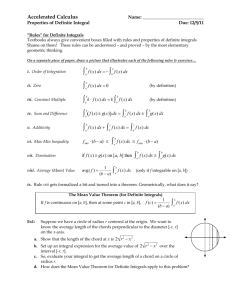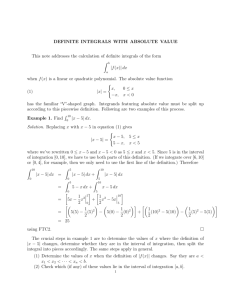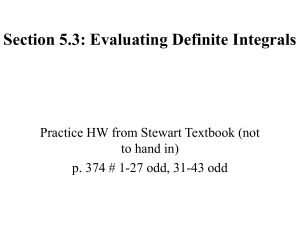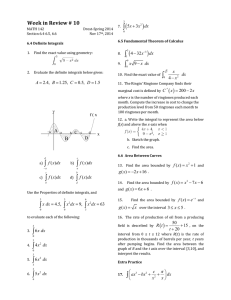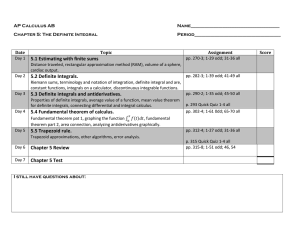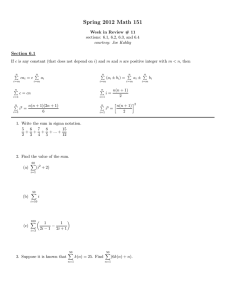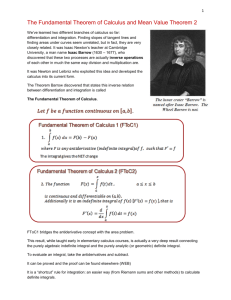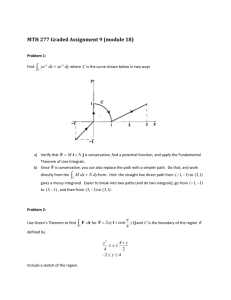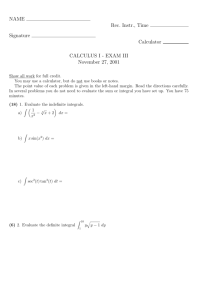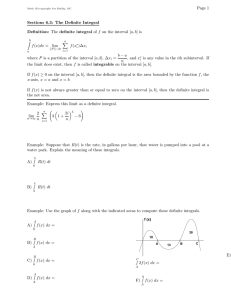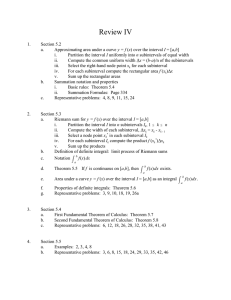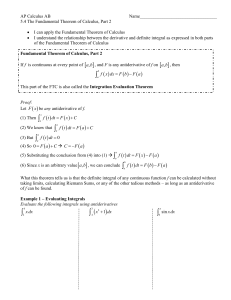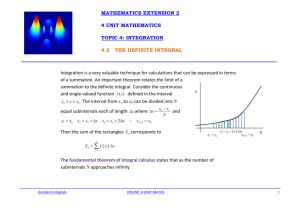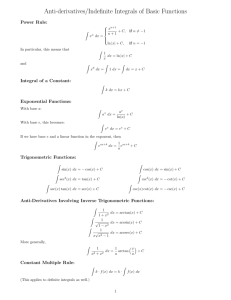5-3 Definite Integrals and Antiderivatives part 2
advertisement
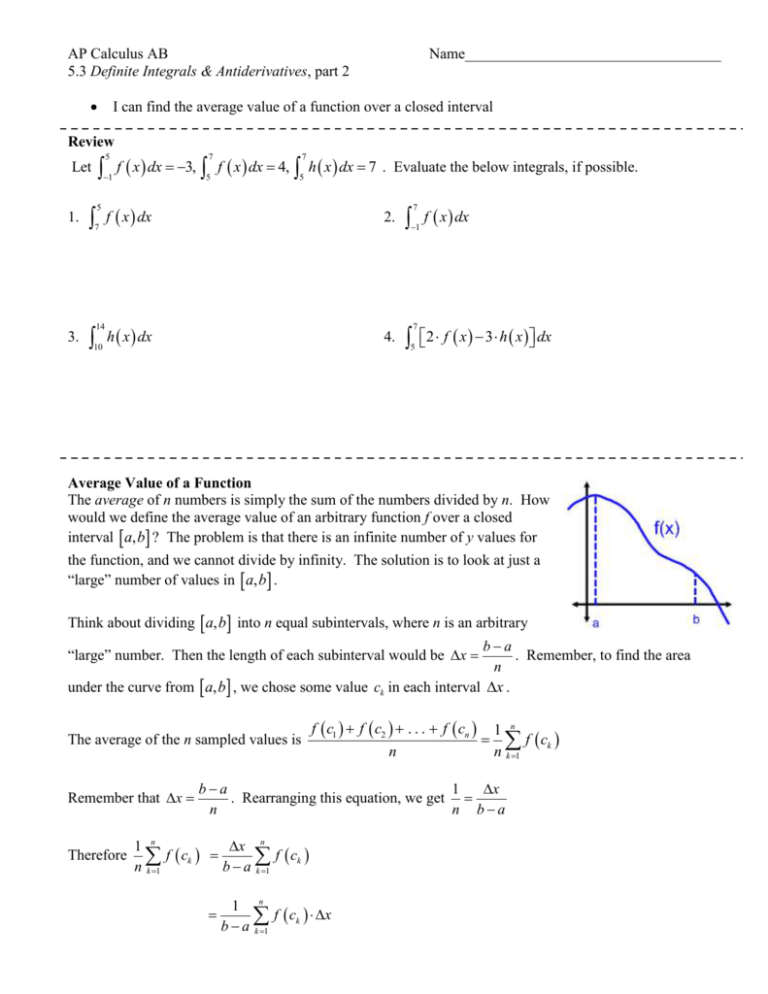
AP Calculus AB 5.3 Definite Integrals & Antiderivatives, part 2 Name__________________________________ I can find the average value of a function over a closed interval Review 1. 3. f x dx 3, h x dx 7 . 5 f x dx 2. 14 h x dx 4. 1 7 10 7 f x dx 4, 5 Let 5 7 5 Evaluate the below integrals, if possible. f x dx 7 1 7 5 2 f x 3 h x dx Average Value of a Function The average of n numbers is simply the sum of the numbers divided by n. How would we define the average value of an arbitrary function f over a closed interval a, b ? The problem is that there is an infinite number of y values for the function, and we cannot divide by infinity. The solution is to look at just a “large” number of values in a, b . Think about dividing a, b into n equal subintervals, where n is an arbitrary ba . Remember, to find the area n under the curve from a, b , we chose some value ck in each interval x . “large” number. Then the length of each subinterval would be x The average of the n sampled values is Remember that x Therefore f c1 f c2 . . . f cn 1 n f ck n n k 1 ba 1 x . Rearranging this equation, we get n n ba 1 n x n f c f ck k ba n k 1 k 1 1 n f ck x b a k 1 1 times a Riemann sum for f on a, b . ba This means that when we consider this averaging process as n , we find it has a limit and the limit is Does the last line look familiar? It should. It is 1 b f x dx b a a Wow!! This exciting result means that the average value of a function can be found with a definite integral (note that this is a popular topic on the AP Exam!) Average (Mean) Value If f is integrable on a, b , its average (mean) value on a, b is av f 1 b f x dx b a a Practice Use your calculator to find the average value of f x 4 x 2 on 0,3 The Mean Value Theorem for Definite Integrals If f is continuous on a, b , then at some point c in a, b , f c 1 b f x dx b a a Together with the Mean Value Theorem for derivatives, this means that if a function f is continuous on a, b and differentiable on a, b , then there is some point in a, b where the derivative equals the average rate of change over a, b and another point on a, b where the function equals its average value. Exploration Suppose we have a circle of radius 4 centered at the origin. We want to know the average length of the chords perpendicular to the diameter along the x-axis from 4, 4 . See dashed lines at the right. 1. Use the Pythagorean Theorem to show that the length of the chord at x is 2 16 x2 2. Set-up an integral expression for the average value of 2 16 x2 over the interval 4, 4 3. Evaluate the integral by identifying its value as an area. 4. What is the average length of a chord in a circle of radius 4? 5. Explain how we can use the Mean Value Theorem for Definite Integrals to show that the function assumes the value in problem (4). 6. What is the average length of a chord of a circle of radius r? Practice x 4, 4 x 1 Find the average value of f x on 4, 2 . x 2, 1 x 2 Use the graph at the right to help.


